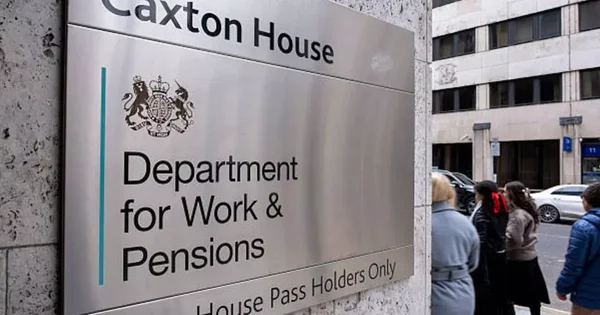Let’s Break This Down Together...
Getting investment for your startup can feel tricky especially when HMRC paperwork is involved. You’ve probably heard about SEIS advance assurance and wondered if you really need it.
This article walks you through what SEIS advance assurance is, why it matters, and how to apply without the stress. We’ll cover eligibility, the application process, and how to stay compliant after approval.
By the end, you’ll know exactly how to secure HMRC’s green light and give investors the confidence they need. Let’s dive in.
What exactly is SEIS (Seed Enterprise Investment Scheme) advance assurance?
SEIS advance assurance is simply HMRC’s written confirmation that your company qualifies for the Seed Enterprise Investment Scheme tax reliefs. Think of it as a pre-approval that investors can trust. SEIS/EIS advance assurance is a key step for startups seeking investment, and it applies to both the Seed Enterprise Investment Scheme and the Enterprise Investment Scheme.
When investors put money into startups, they’re taking massive risks. The tax reliefs under SEIS help offset those risks, offering up to 50% income tax relief plus capital gains exemptions. Capital gains tax relief is a major benefit for investors under these schemes, making early-stage investments more attractive.
But investors want guarantees those tax benefits will actually materialise. That’s why they’ll typically ask if you have advance assurance before parting with their cash. Obtaining advance assurance from HMRC is not a legal requirement, but it is highly recommended to attract investors and provide certainty.
The process involves HMRC checking that your company meets all the SEIS requirements before you start fundraising. It removes the tax uncertainty from the equation. Obtaining advance assurance (sometimes called EIS advance assurance for the EIS scheme) is a formal process through HMRC, and is part of the broader enterprise investment schemes designed to support early-stage companies.
Why every startup should apply for it
Getting SEIS advance assurance isn’t just a nice-to-have - it’s often the difference between successful fundraising and endless investor meetings that go nowhere. Many investors specifically look for SEIS or EIS advance assurance before considering an investment.
Investors are a cautious bunch. When they see you’ve got advance assurance, it signals you’re serious and professional about your fundraising. Potential investors are more likely to engage when they see advance assurance in place.
It also speeds up your investment timeline. Applying for advance assurance before approaching investors is crucial, as it streamlines the process and increases the likelihood of securing funding. Without it, you might find yourself in the awkward position of having interested investors who won’t commit until the tax position is clear.
In the competitive UK startup landscape, having advance assurance gives you an immediate edge over companies that haven’t bothered with this step.

The eligibility checklist
To qualify for SEIS, your company must be UK-based with a permanent establishment here. This isn’t just about where you’re registered - you need genuine UK operations. Your business must be under 2 years old when the SEIS shares are issued. The company trading start date (i.e., when the company started trading) and the date of its first commercial sale are key factors in determining eligibility for the scheme.
Size matters too - you need fewer than 25 full-time employees and gross assets must not exceed £200,000 before the investment. These requirements are part of the broader eligibility rules for venture capital schemes such as SEIS, EIS, and Venture Capital Trusts.
Most business activities qualify, but there are some excluded trades like property development, financial services, and farming. The timing of the first commercial sale is important for compliance with HMRC rules, as it marks the start of the company's trading history. Check HMRC’s list before you apply.
You can’t have raised money under EIS or VCT schemes before SEIS. Companies must provide details of previous investments received under any venture capital scheme, including SEIS, EIS, VCTs, or SITR, to ensure compliance with scheme limits. The funding journey should start with SEIS for early-stage companies.
How to apply: keeping it simple
HMRC offers an advance assurance service, which allows companies to check if their proposed investment is likely to qualify before issuing shares. The application process happens online through HMRC’s digital portal. There’s no fee, which is a nice bonus for cash-strapped startups.
Companies may need to submit separate applications for each investment round or scheme they wish to have reviewed. You’ll need to submit a business plan, financial projections, and details about your proposed share issue a robust financial forecast is a key part of the required documentation. This paperwork helps HMRC understand your business model.
Be clear about how you’ll use the investment funds. HMRC wants to see the money going toward genuine business growth, not just paying existing debts. Include information about your directors, shareholders, and trading activities. Transparency is key here for a smooth approval process.
A covering letter should accompany your application and supporting documents to ensure proper processing by HMRC. The processing time typically runs 4-6 weeks, though it can sometimes take longer during busy periods. All relevant dates and information should be consistent across your business plan, bank statements, and other documents. Plan accordingly in your fundraising timeline!
After shares are issued, you must submit a compliance statement to HMRC to confirm eligibility for tax relief.

Avoiding common mistakes
The number one reason applications get rejected is failing to demonstrate genuine risk-to-capital. HMRC specifically assesses the risk to capital condition to ensure that investments are genuinely at risk and are used for business growth. The capital condition is designed to prevent tax avoidance and ensure that funds are used for the long-term development of the business. Your business can’t look like a safe bet - SEIS is for truly risky ventures.
Incomplete business plans or vague financial forecasts will send your application straight to the rejection pile. Be thorough and realistic with your projections. Individual investors rely on accurate information to assess the risks and benefits of investing.
Many founders misunderstand what counts as a qualifying trade. Double-check that your activities aren’t on the excluded list before applying. Timing matters - if you’ve already issued shares you wanted to qualify for SEIS, you’ve got the process backwards. Get advance assurance first, then issue shares. Advance assurance confirms company eligibility, but does not guarantee that every individual investor will qualify for tax relief.
I once worked with a founder who had to restart their entire fundraising process because they’d issued shares before securing advance assurance. It cost them three months of runway.
Watch out for “disqualifying arrangements” - HMRC is on the lookout for schemes designed primarily to access tax relief rather than grow genuine businesses. There should be no arrangements in place to reduce risk specifically for individual investors, as this would breach HMRC's investing requirements.
After you get approved
Advance assurance doesn’t have an official expiry date, but it’s based on the circumstances at the time of application. If your company's circumstances change significantly, you may need to update HMRC or reapply.
Once you’ve issued shares, you’ll need to submit an SEIS1 compliance statement to HMRC. Only after this is processed will your investors receive their SEIS3 certificates. Issuing certificates is necessary for investors to claim their tax relief.
Keep detailed records of how you use the investment. HMRC can check compliance for years afterwards, so maintain good documentation. Remember that certain actions could disqualify the investment from SEIS relief even after approval. Changing your business activities dramatically is a common pitfall.
If anything substantial changes from what you outlined in your application, contact HMRC promptly. Surprises aren’t welcome in tax matters!

Maintaining your SEIS eligibility
Maintaining your SEIS eligibility is just as important as securing advance assurance. HMRC’s Seed Enterprise Investment Scheme supports genuine early-stage companies, so you’ll need to keep meeting the qualifying conditions to protect your investors’ tax reliefs.
Keep an eye on your company’s size your gross assets must stay below £200,000, and you should have fewer than 25 full-time employees. Knowledge-intensive companies may have more flexibility, but must show that much of their spending goes into research and development.
Your business must continue trading or preparing to trade in a qualifying activity, without falling into financial difficulty or engaging in any tax avoidance schemes. If your operations or structure change, it’s vital to reassess your eligibility and inform HMRC of any updates.
Accurate record-keeping is key. Up-to-date accounts, forecasts, and bank statements help you stay compliant and ready for HMRC checks. Always ensure your investment documents business plans, forecasts, and pitch decks reflect your current situation before fundraising.
Finally, respond promptly to any HMRC requests and apply only through the official GOV.UK portal. Staying compliant builds investor confidence and safeguards their tax benefits, helping your startup secure funding and grow with confidence.
Final Thoughts
SEIS advance assurance has become a standard expectation in the UK startup funding scene. While not legally required, trying to raise seed investment without it is swimming against the tide.
The process takes some effort, but the payoff is substantial. Investors who are confident about their tax position are much more likely to write those crucial early cheques.
Getting advance assurance shows you're serious about compliance and investor relations. These qualities matter deeply to the people you want backing your company.
Pie tax: Simplifying SEIS Advance Assurance Tax
Starting your SEIS journey shouldn't feel like climbing a mountain of paperwork. Pie tax, the UK's first personal tax app, makes the process straightforward with dedicated startup tax assistants. Our platform helps prepare the documentation HMRC expects, increasing your chances of first-time approval. We understand what makes a strong application and guide you through each step.
We'll help craft business plans and financial projections that tick all of HMRC's boxes without the hefty accountancy fees. Our specialists have helped hundreds of startups secure advance assurance.
Many founders tell us the tax side of fundraising was what worried them most until they found our service. We take that stress away so you can focus on building your business.
See how our platform works by exploring the Pie tax app today.

Quick and Easy Guide to Adding SEIS Tax Relief in the Pie App
Follow these easy steps to ensure your tax reliefs are accurately recorded for your self-assessment:
To add SEIS tax relief, simply tap ‘Quick Add’ on the home screen of the Pie Tax App. From there, select ‘Add Tax Relief’, then choose ‘Tax Relief Investment Schemes’.Step 1

Next, select the specific investment relief you want to claim. Enter the name of the investment, the amount, and the date the investment was completed.Step 2










